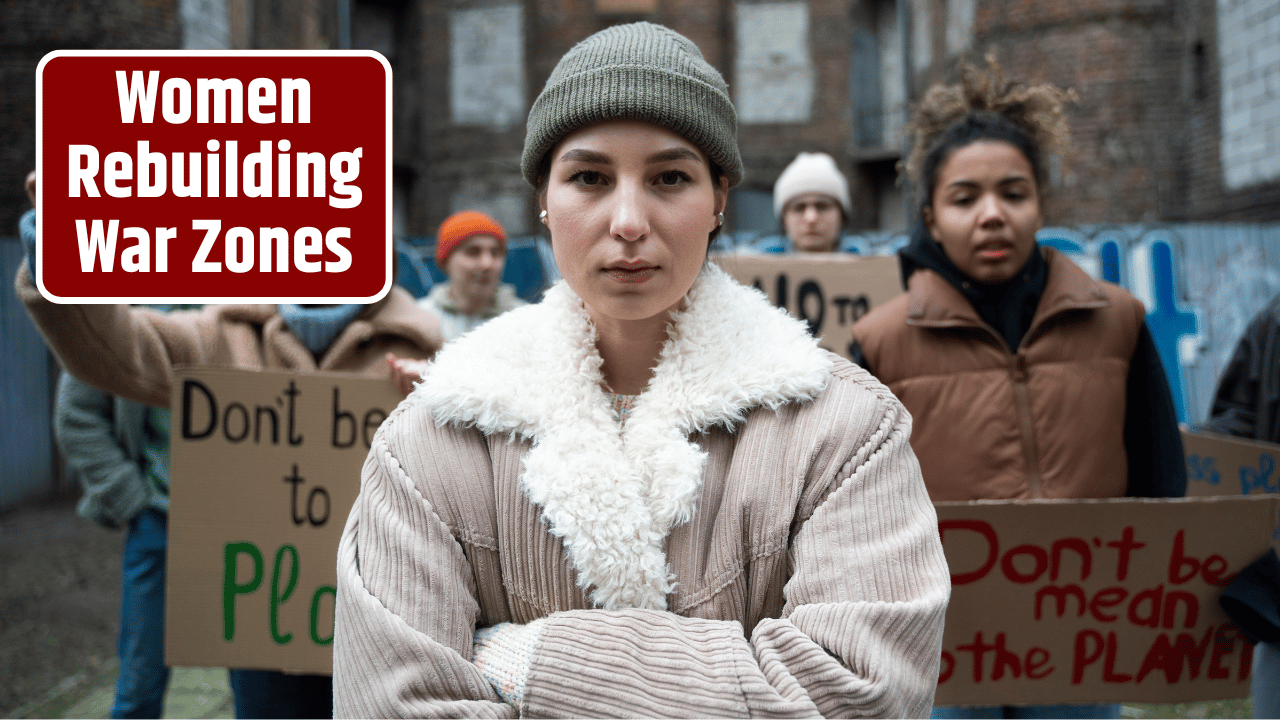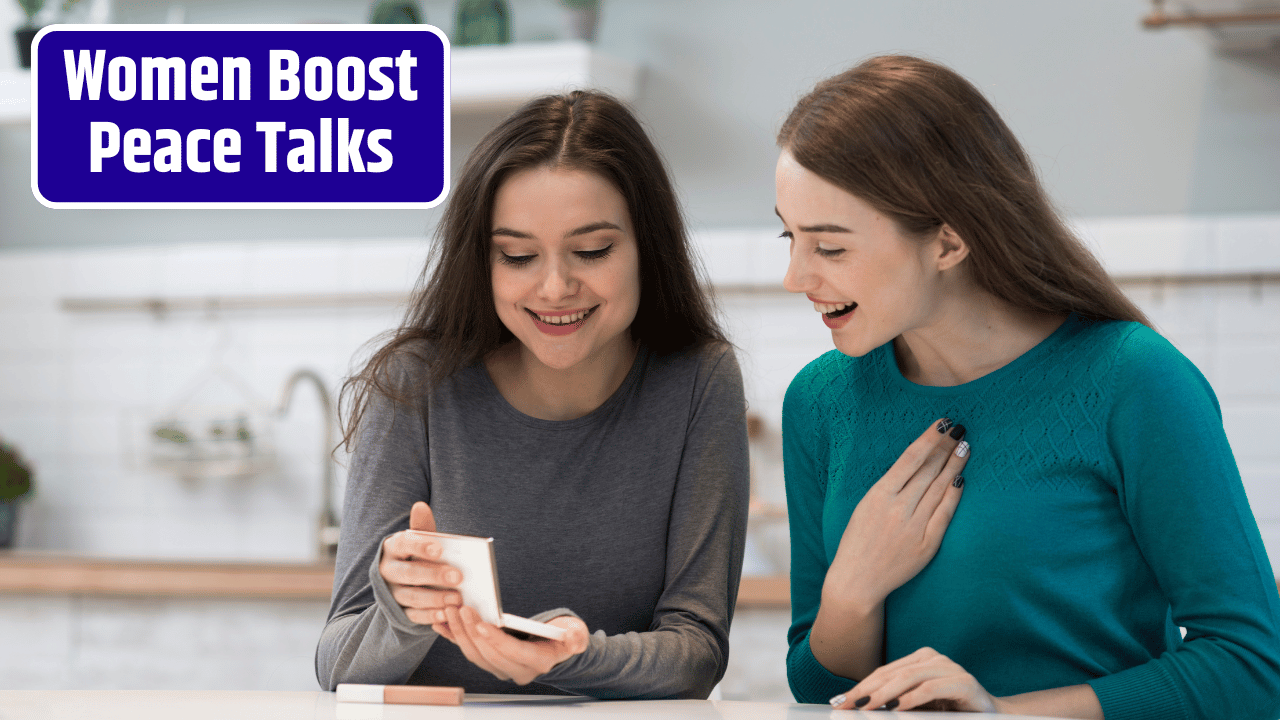You hear it in hushed voices at refugee camps. You see it in the fierce eyes of mothers walking their kids past tanks and checkpoints. It’s not just survival anymore — it’s something bigger. Women in war-torn nations are no longer waiting for peace to be handed down from some high-level conference room in Geneva. They’re building it from the ground up, brick by fragile, hopeful brick.
And honestly? They’ve been doing it for a while — the world just hasn’t been paying attention.
Table of Contents
Not Just Survivors — Architects of Peace
War has a way of erasing women from the narrative, doesn’t it? They’re lumped in as “vulnerable populations” or “civilian casualties,” as if their only role is to endure the violence, not challenge it.
But reality? Far more complex — and powerful.
Across regions plagued by armed conflict — from Yemen to the DRC, Afghanistan to Ukraine — women have emerged not just as survivors, but as leaders, organizers, mediators, and visionaries.
In Colombia, women insisted on a gender chapter in the 2016 peace agreement — a global first. In Sudan, they were the backbone of the resistance movement that led to the toppling of Bashir. In Ukraine, they’re running aid centers, evacuating civilians, and coordinating psychological care for survivors. They’re not in the background. They’re holding the whole damn thing together.
Why It Works: Women’s Approach to Peace
Here’s what’s wild — when women are involved in peacebuilding, the results are measurably better. We’re not just talking good intentions; the data backs it.
UN research shows that peace agreements with women at the table are 35% more likely to last 15+ years. That’s not fluff — that’s staying power.
Why? Because women bring different priorities to the table:
- Focus on human security over political ego
- Emphasis on education, healthcare, and economic recovery
- Inclusion of marginalized voices, especially those most affected by war
They’re not trying to divide the spoils. They’re trying to fix the system.
And here’s the kicker — women often do this with fewer resources, less recognition, and in cultures that still resist the idea of female leadership.
Barriers, Bullsh*t, and Brave Acts
Let’s be real — it’s not all inspirational Instagram posts and UN panels. The road to peacebuilding for women is full of potholes.
In many war zones, women face:
- Violence and intimidation for speaking out
- Exclusion from formal peace negotiations
- Cultural stigma for defying gender norms
- Lack of funding for grassroots initiatives
- Tokenism, where one woman is invited “for diversity” but has no real voice
But somehow, they push through.
Take Yemen: Women’s peace networks are offering legal aid, teaching conflict resolution, and brokering local ceasefires — all while being shut out of the national dialogue.
Or Afghanistan, where despite the Taliban’s restrictions, women are still finding ways to advocate underground, at great personal risk.
They’re not just “empowered.” They’re defiant, resilient, and revolutionary.
Building Peace from the Ground Up
Top-down peace deals rarely work if they don’t reflect the needs of real communities. Women-led efforts tend to be community-based, inclusive, and sustainable.
Here’s what that actually looks like:
| Action Taken | Country | Impact |
|---|---|---|
| Women-led mediation committees | South Sudan | Resolved local tribal disputes |
| Education programs for girls | Pakistan (tribal areas) | Reduced child marriage & recruitment |
| Female aid coordinators | Ukraine | Organized evacuations, trauma support |
| Economic cooperatives | Syria (Kurdish areas) | Offered financial independence |
It’s not always flashy. You might not hear about it on the news. But it’s real, and it’s working.
What Needs to Change?
If we’re serious about building a peaceful tomorrow, then empowering women can’t just be a feel-good slogan. It has to mean:
- Funding women-led peace initiatives
- Mandating women’s inclusion in negotiations
- Protecting women activists and leaders
- Challenging cultural norms that keep women in the shadows
- Elevating local voices, not just elite ones
Peace doesn’t come from above. It rises from below — from markets, schools, homes, shelters. And guess who’s already there, rebuilding, restoring, refusing to give up?
FAQs
Are there real examples of peace lasting longer because of women?
Yes. The Colombian peace agreement is a standout. The inclusion of women ensured protections for indigenous communities, LGBTQ+ rights, and reparations for sexual violence survivors — and it’s one of the most comprehensive deals globally.
Isn’t this just about gender equality, not peace?
It’s both. Peace is political and social. Excluding half the population from decision-making weakens the whole process.
What about places where women can’t legally or culturally lead?
They still do. Often through informal networks, underground movements, or by organizing community-level initiatives. It’s not always public, but it’s powerful.
Can international aid really help empower women?
Absolutely — if done right. Funding grassroots organizations and protecting women human rights defenders is key. But parachuting in top-down programs without local input? That usually backfires.














